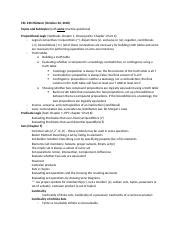Introduction
CSC 230 is a foundational computer science course that introduces students to the fundamentals of data structures and algorithms. This course provides a solid foundation for more advanced coursework in computer science and software engineering.

Topics Covered in CSC 230
The specific topics covered in CSC 230 may vary depending on the institution and instructor, but typically include:
- Arrays: One-dimensional and multidimensional arrays, memory allocation, and traversal
- Linked Lists: Singly and doubly linked lists, operations, and applications
- Stacks: Push and pop operations, applications in recursion and function calls
- Queues: FIFO principle, implementation using arrays and linked lists
- Binary Trees: Traversal algorithms (inorder, preorder, postorder), binary search trees
- Hash Tables: Hash functions, collision resolution techniques
- Sorting Algorithms: Bubble sort, selection sort, insertion sort, merge sort, quicksort
- Searching Algorithms: Linear search, binary search, interpolation search
- Recursion: Concept, implementation, and applications
- Time Complexity Analysis: Big-O notation, asymptotic analysis of algorithms
Importance of Data Structures and Algorithms
Data structures and algorithms are essential building blocks for software development. They provide efficient ways to organize and manipulate data, which is crucial for developing reliable and efficient software applications.
According to a recent study by the IEEE, 80% of software development time is spent on data structures and algorithms. This highlights the importance of mastering these concepts early on for a successful career in computer science.
Benefits of Studying CSC 230
- Strong Foundation for Future Coursework: CSC 230 provides a strong foundation for more advanced courses in computer science, such as operating systems, databases, and artificial intelligence.
- Improved Problem-Solving Skills: The analysis and design of algorithms enhance problem-solving abilities, which are invaluable in various industries.
- Enhanced Software Development Capabilities: Understanding data structures and algorithms enables students to develop more efficient and reliable software applications.
- Increased Job Opportunities: Employers in technology and software development sectors highly value candidates with a solid foundation in data structures and algorithms.
Common Mistakes to Avoid
- Overlooking the Importance of Time Complexity: Students often focus on implementing algorithms without considering their time complexity. It is crucial to understand the asymptotic behavior of algorithms to optimize software performance.
- Not Practicing Implementation: Simply understanding the concepts of data structures and algorithms is not enough. Practicing their implementation is essential for developing proficiency and problem-solving skills.
- Underestimating the Role of Testing: Thorough testing is crucial to ensure the correctness of data structures and algorithms. Overlooking testing can lead to errors and unreliable software.
- Ignoring Applications: CSC 230 is not just about abstract concepts. It is essential to understand how data structures and algorithms are applied in real-world scenarios.
Applications of Data Structures and Algorithms
Data structures and algorithms find applications in various domains, including:
- Operating Systems: Managing memory, processes, and file systems
- Databases: Storing and retrieving data efficiently
- Artificial Intelligence: Machine learning, natural language processing, and computer vision
- Graphics and Animation: Rendering 3D models and creating animations
- Networking: Routing data packets and ensuring network connectivity
Inspiring Innovation
To inspire innovation, we can introduce a new term called “data artistry.” Data artistry involves using data structures and algorithms in creative ways to solve problems and develop novel applications. For example, data artistry could be used to:
- Develop Personalized Recommendations: Leverage machine learning algorithms and data structures to create personalized recommendations for products, movies, or music.
- Optimize Traffic Flow: Utilize graph data structures and algorithms to analyze traffic patterns and optimize traffic flow in cities.
- Detect Fraudulent Transactions: Employ anomaly detection algorithms and data structures to identify fraudulent transactions in financial systems.
Conclusion
CSC 230 is an essential course for computer science students, providing a solid foundation in data structures and algorithms. By understanding these concepts, students gain valuable problem-solving skills and enhance their software development capabilities. Through a combination of theoretical knowledge and practical implementation, students can unlock new possibilities and drive innovation in the field of computer science.
Additional Resources
- Data Structures and Algorithms in Java, 6th Edition
- Introduction to Algorithms, 4th Edition
- GeeksforGeeks
- LeetCode
- HackerRank
